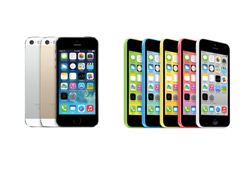There will be almost two billion LTE handsets shipped by 2020, fuelled by demands for data and evolution in the technology, new research has claimed.
A report from ABI Research claimed next year there will be 676 million LTE smartphones shipped, up 204 million units from last year. Researchers said fresh infrastructure and spectrum will be vital to support the 1.89 billion units by the end of 2019.
Cheri Wong, Research Analyst at ABI Research, said: “With the proliferation of larger screen smart devices driving up the insatiable appetites for content and faster speeds, ABI Research estimates that there will be 350 commercial LTE networks forecasted by 4Q 2014.”
The report also referred to the growing presence of LTE-Advanced, which is now commerically available on 20 networks across 14 countries. There are an increasing number of trials of FDD/TDD LTE carrier aggregation, with Ericsson, Singtel and Qualcomm hitting speeds of 260MBps and Nokia demonstrating similar speeds in a test with China Telecom.
Last week, Telekom Austria launched carrier aggregation in its home market and Slovenia, which it said would increase indoor coverage and performance of the likes of video.
Commenting on the ABI report, Jake Saunders, VP and Practice Director for 4G/5G, said: “While commercial devices supporting FDD/TDD carrier aggregation will only debut in 2015, this has not deterred global operators like Vodafone from rolling out LTE-Advanced technology using carrier aggregation to supplement its existing LTE mobile services.”
Other findings in the report were that operators will benefit from the likes of VoLTE and LTE broadcast in the short term as they launch new services to customers.
Read more:
Incoming ITU chief gears up for WRC 2015, warns pressure is on to reach consensus
UK’s national roaming plans “could hinder” police work, claims GSMA



